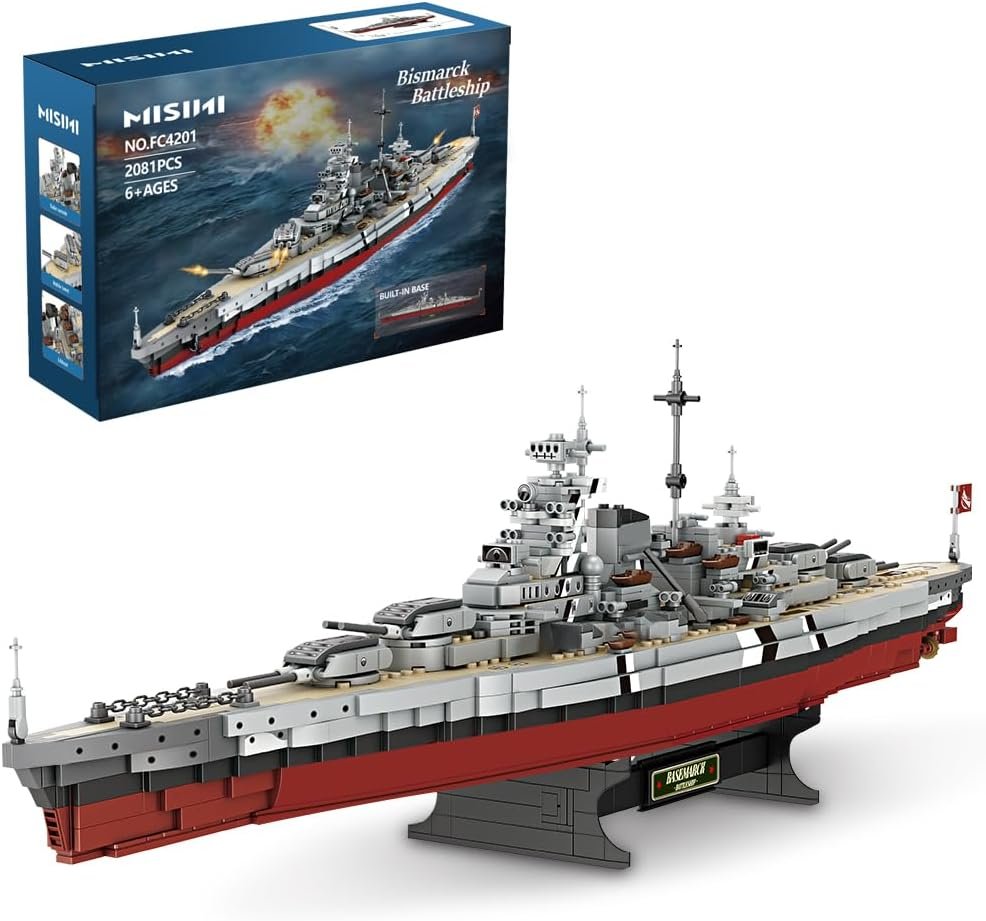The Bismarck Battleship RC Model: Engineering History in Miniature

For decades, the Bismarck—Nazi Germany’s most formidable battleship—has captivated historians and hobbyists alike. Its RC model incarnations, particularly the 1/200 scale masterpieces, fuse historical grandeur with cutting-edge engineering. Here’s why these models command such reverence.
A Legend Forged in Steel: The Bismarck’s Battleship Historical Legacy
Launched in 1939, the Bismarck redefined naval power. With a 251-meter hull, 42,300-ton displacement, and eight 380mm main guns, it surpassed Britain’s HMS Hood as the world’s largest warship. Its short but explosive career peaked in May 1941, when it sank the Hood in six minutes during the Battle of Denmark Strait—a feat that stunned the Royal Navy. Though sunk days later after a relentless chase, its blend of speed (30.8 knots), armor (320mm-thick belts), and firepower left an indelible mark on naval history.
Engineering Marvels: The Battleship RC Model Series
Today, brands like Trumpeter, Tamiya, and Revell transform this legacy into intricate RC models. Key series include:
- 1/200 Scale Giants: The crown jewel, mirroring the Bismarck’s 1.25-meter RC model length. Features motorized turrets, rotating radars, and illuminated details.
- 1/350 Mid-Scale Kits: Balance detail and practicality, ideal for intermediate builders.
- Static-to-RC Conversions: Hobbyists retrofit static kits (e.g., Revell’s 1/570) with propulsion systems.
Bismarck battleship RC Model Series: Scale Kits & Technical Specifications
Top brands offer multiple RC warship series:
| Scale Model Series | Key Features | Target Builders |
|---|---|---|
| 1/200 Premium RC | Motorized turrets, LED lighting | Expert scale modelers |
| 1/350 Mid-Scale | Watertight ABS hull, 4-channel control | Intermediate hobbyists |
| Static-to-RC Kits | DIY propulsion conversion | Custom RC ship builders |
*Table: Technical Specifications of Premium 1/200 Bismarck RC Models*
| Parameter | Details |
|---|---|
| Scale | 1/200 |
| Length | ~125 cm (49 inches) |
| Power System | Twin 380 motors, 7.4V LiPo batteries |
| Speed | 5-8 knots (scale equivalent) |
| Control Channels | 6+ (throttle, rudder, turrets, lighting) |
| Hull Material | Fiberglass/ABS with watertight compartments |
Building an authentic Bismarck Battleship RC model demands conquering three challenges
- Mechanical Integration:
Fitting motors, shafts, and rudders into a scale hull requires precision. The real ship’s steering flaw—requiring 32 crewmen to manually turn the rudder—echoes in RC setups, where watertight seals and torque-resistant servos are critical. - Historical Accuracy:
From the Kriegsmarine camouflage to the Arado 196 seaplanes on catapults, every detail must match archival photos. Builders often reference wreck imagery from James Cameron’s Bismarck documentaries. - Electronics Optimization:
Managing wiring for LED lighting, sound modules, and turret rotation within confined spaces tests even seasoned modelers. Overloading can lead to stability issues or sinkings.
Why Own a Bismarck Battleship RC Model?
- Historical Tribute: A tangible link to WWII naval warfare’s pivotal moments, like the Hood’s sinking.
- Technical Showcase: Demonstrates engineering prowess—miniaturizing thrust systems rivaling the ship’s original 150,000-hp turbines.
- Investment Potential: Limited-edition kits (e.g., Trumpeter’s 1/200 Bismarck) appreciate over time, especially when custom-detailed.
From Ponds to Exhibitions: Where These Battleship Models Shine
- Dynamic Displays: RC fleets recreate battles at hobby ponds, drawing crowds with synchronized maneuvers.
- Educational Tools: Museums use operational models to demonstrate naval architecture and wartime history.
- Competitive Events: Scale ship contests judge authenticity, with Bismarck models often dominating “Best Warship” categories.
“To build a Bismarck RC model is to resurrect a titan,” says master modeler Henrik Jacobs. “You don’t just assemble plastic—you engineer history.”
For collectors, the Bismarck battleship RC model blends reverence for the past with the thrill of technical mastery. It’s not merely a replica; it’s a functional monument to naval ambition—one that sails across the boundary between memory and innovation.